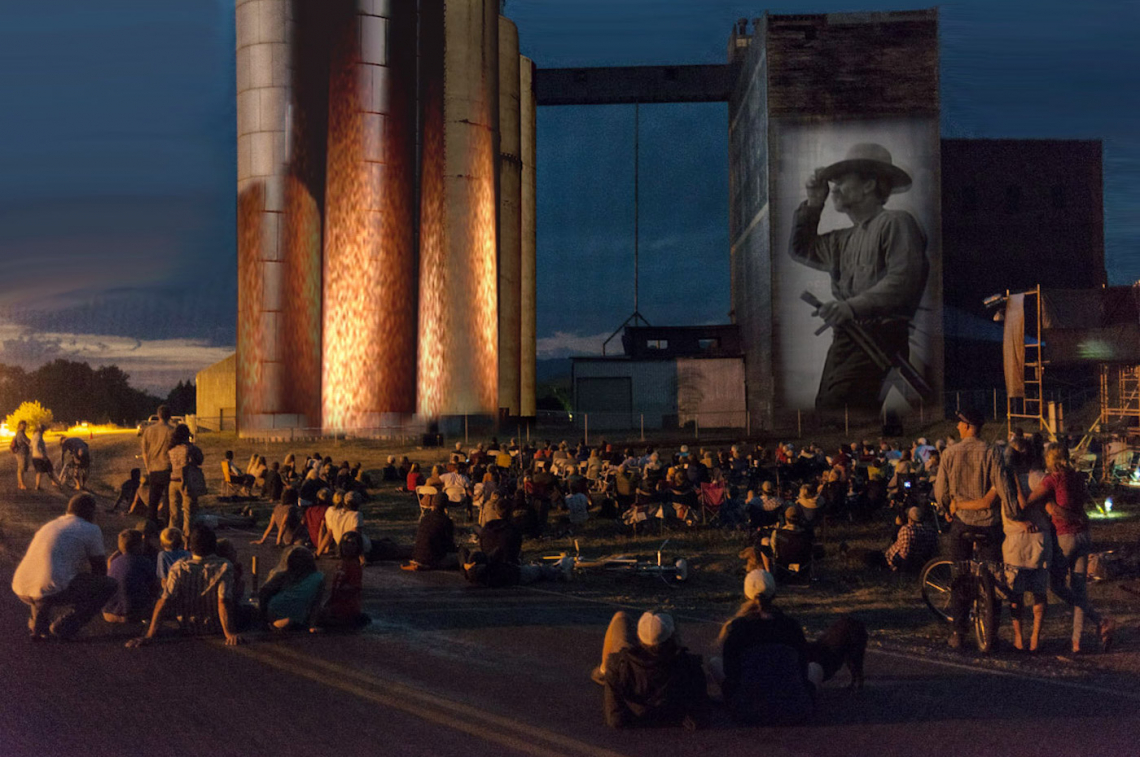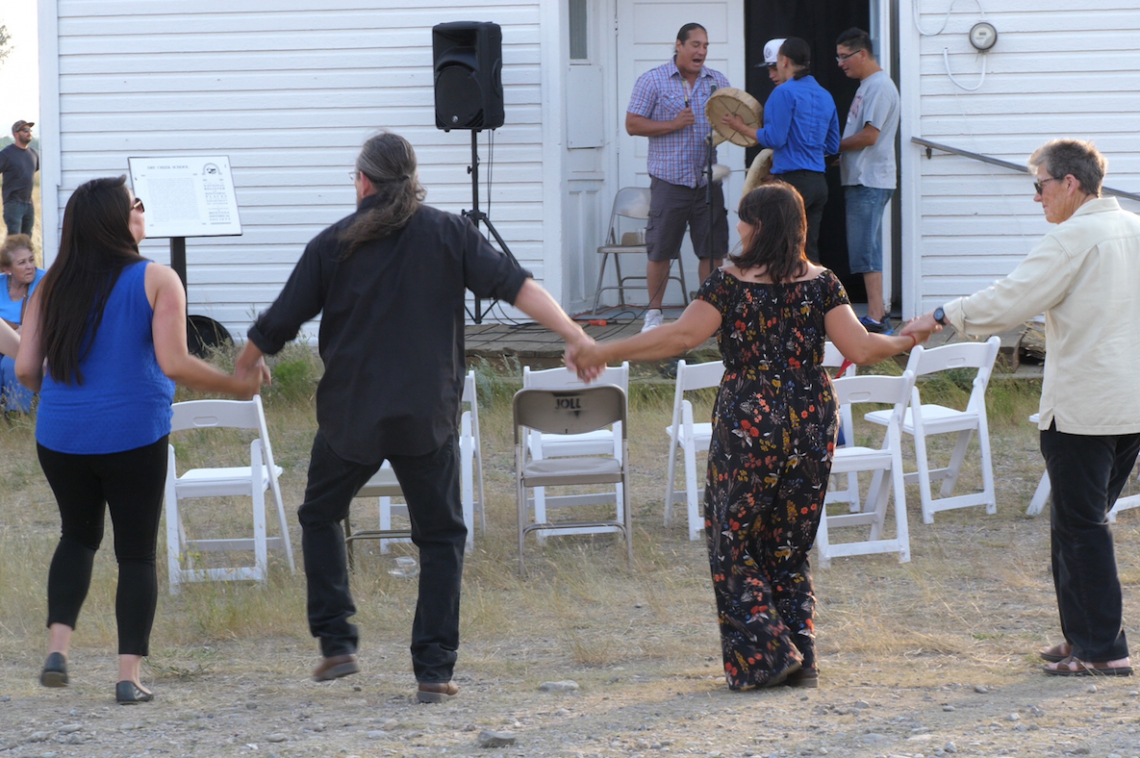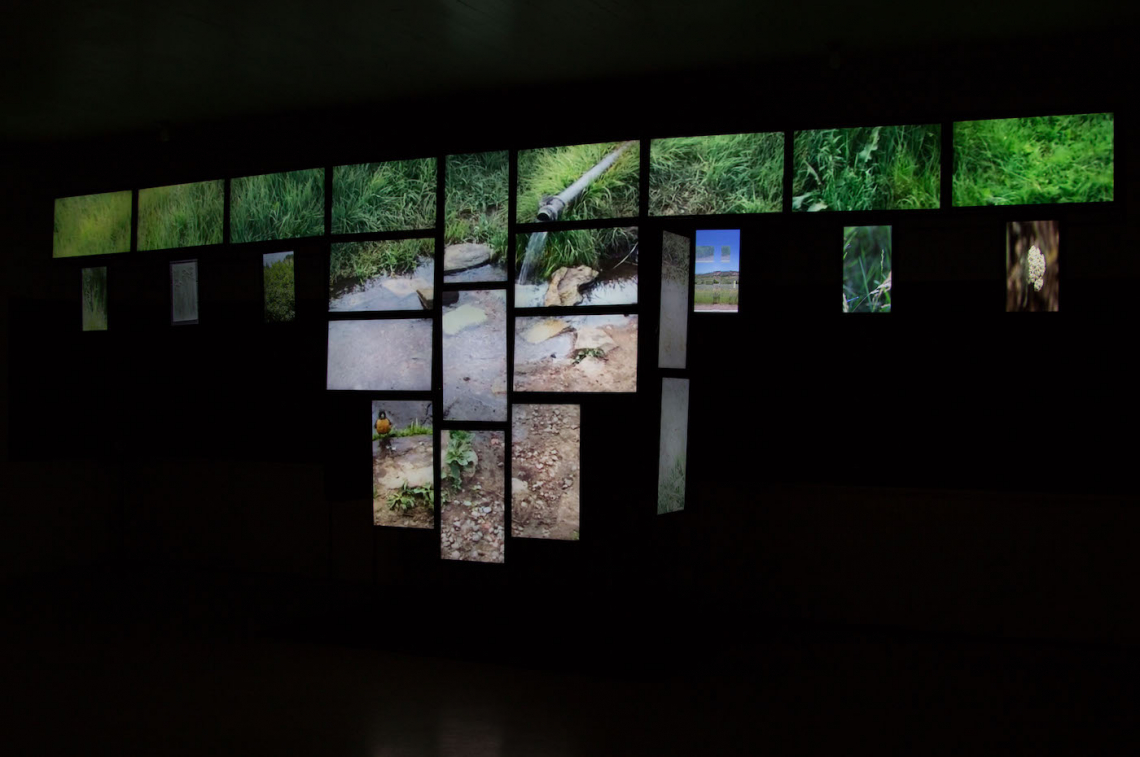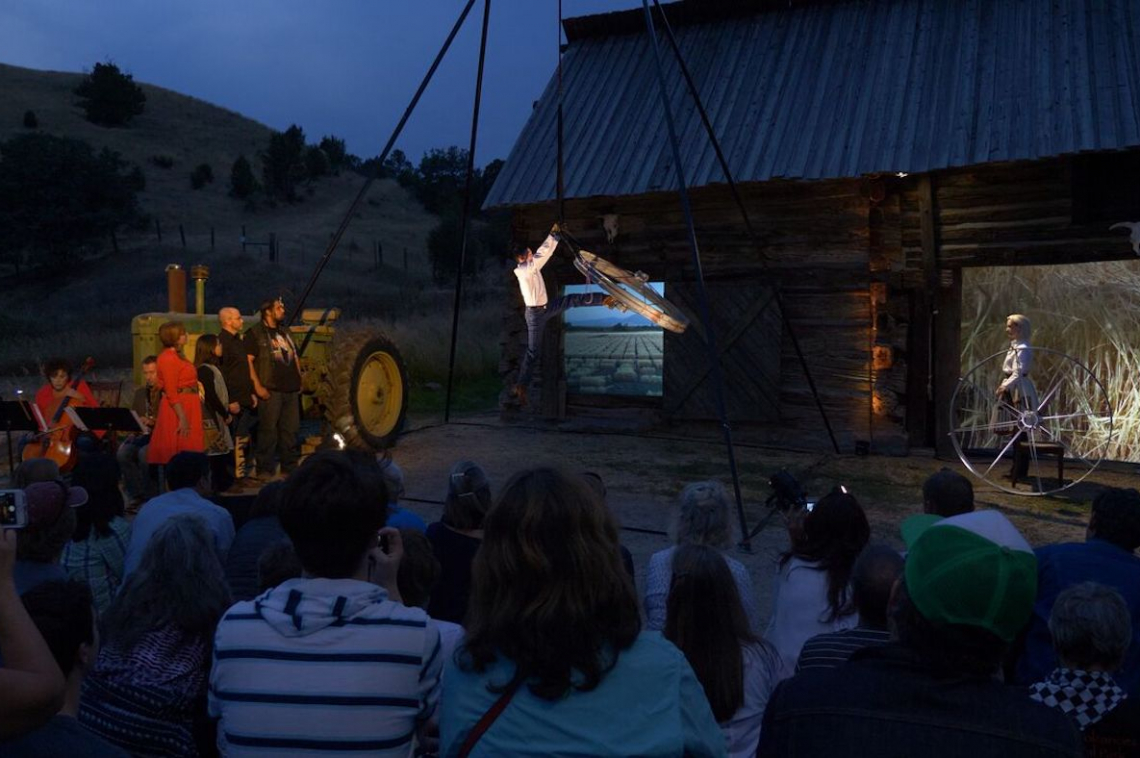



In a rapidly growing western town, indigenous and non-indigenous artists collaborate with ranchers, ecologists, and activists in a poignant performance series about the local water scarcity problem.
In the valley town of Bozeman, Montana, home to some 48,000 people, demand for water is set to outstrip supply as soon as 2030. Farmers, landowners, conservationists, and city officials have been working for years to solve the impending water scarcity problem — and now local artists are joining the struggle.
This summer, Mountain Time Arts (MTA), a nonprofit organization dedicated to the production of public art in southwest Montana, is staging its second annual Waterworks performance series. Featuring collaborations between artists, ranchers, ecologists, and activists, as well as between indigenous and non-indigenous communities, all of the Waterworks performances address the issue of water as a dwindling resource in a rapidly growing western town. In the wake of political conflicts over water in Flint and Standing Rock — the Lakota phrase “Mní wichóní” (“Water is life”) has become a common refrain at protests nationwide — the series seeks to preemptively draw attention to the area’s water issues before they reach crisis levels.
On August 23 and 24, in the bucolic Missouri Headwaters State Park, at the point where the Jefferson, Madison, and Gallatin rivers merge, MTA will stage 2018’s final Waterworks performance. Called “Cherry River: Where the Rivers Mix,” named after the indigenous place name for the East Gallatin River, it’s a collaboration between the musician and scholar Shane Doyle, a member of the Crow tribe, and Mary Ellen Strom, the creative director of MTA. The event will feature a waterborne concert by the Northern Cree Singers, an acclaimed powwow drum and vocal group from Alberta, Canada, accompanied by Metís fiddlers and the park’s natural soundscape.
Unlike Flint or Standing Rock, Bozeman is wealthy and predominately white, rich in financial and natural resources, yet water scarcity is likely to affect the town in the near future. This threat has driven artists to follow the lead of indigenous water protectors by thinking in terms of watershed boundaries rather than city limits. The local population is both growing and transforming, from a predominantly agricultural community to a population of tech-workers, real estate developers, and other free agents, many of whom are drawn to the region’s recreational resources and its relatively low cost of living compared to the Bay Area. Still, the audience for MTA’s Waterworks has been made up predominantly of the former category: old-guard Montanans who have been in the area for decades, if not for generations — or, in the case of Native participants, millennia — and who have a vested interest in maintaining local environmental health and accessibility as populations grow and housing costs skyrocket.
There is a certain pastoral romanticism to these performances — the gurgling streams, the birds, the music... The MTA’s inaugural event, in 2016, was a video projection, called “Flow,” by Mary Ellen Strom, on the silos of Bozeman’s Old Story Mill, the site of a nineteenth century water-powered mill and former wetland, now slated for restoration as part of a new park. The film combined shots of flowing water and waving native grasses with grainy footage of cowboys and trains. These sorts of events are pitched perfectly to an audience that has little access to contemporary art, but that hungers for the kind of uplifting communal experience that site-specific performance can provide.
Mountain Time Arts [along with other local arts organizations] attests to the fact that in 2018, environmental endangerment, the perils of post-industrial toxicity, climate change, and population growth are becoming primary movers of artistic production and arts funding in Montana. How Strom’s romantic regionalism will fit into an urban and coastal vision of contemporary performance practice is unclear. But then again, I’m not sure that’s the point. Perhaps the purpose is closer to that of the Northern Cheyenne war shirt, a garment-like object designed to protect the wearer in battle. The artist Bently Spang, who references the war shirt frequently in his sculptures, describes it as such: “They were community-based objects, they encompassed community values, and they acknowledged and tapped into these other realms of our existence that could protect the community as a whole.”
This is an abbreviated version of the story “Artists Reflect on Water Scarcity in a Gentrifying Montana Town,” which originally appeared on Hyperallergic in August 2018.
Waterworks received funding from ArtPlace America in 2017.





